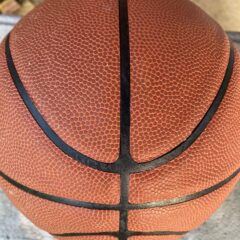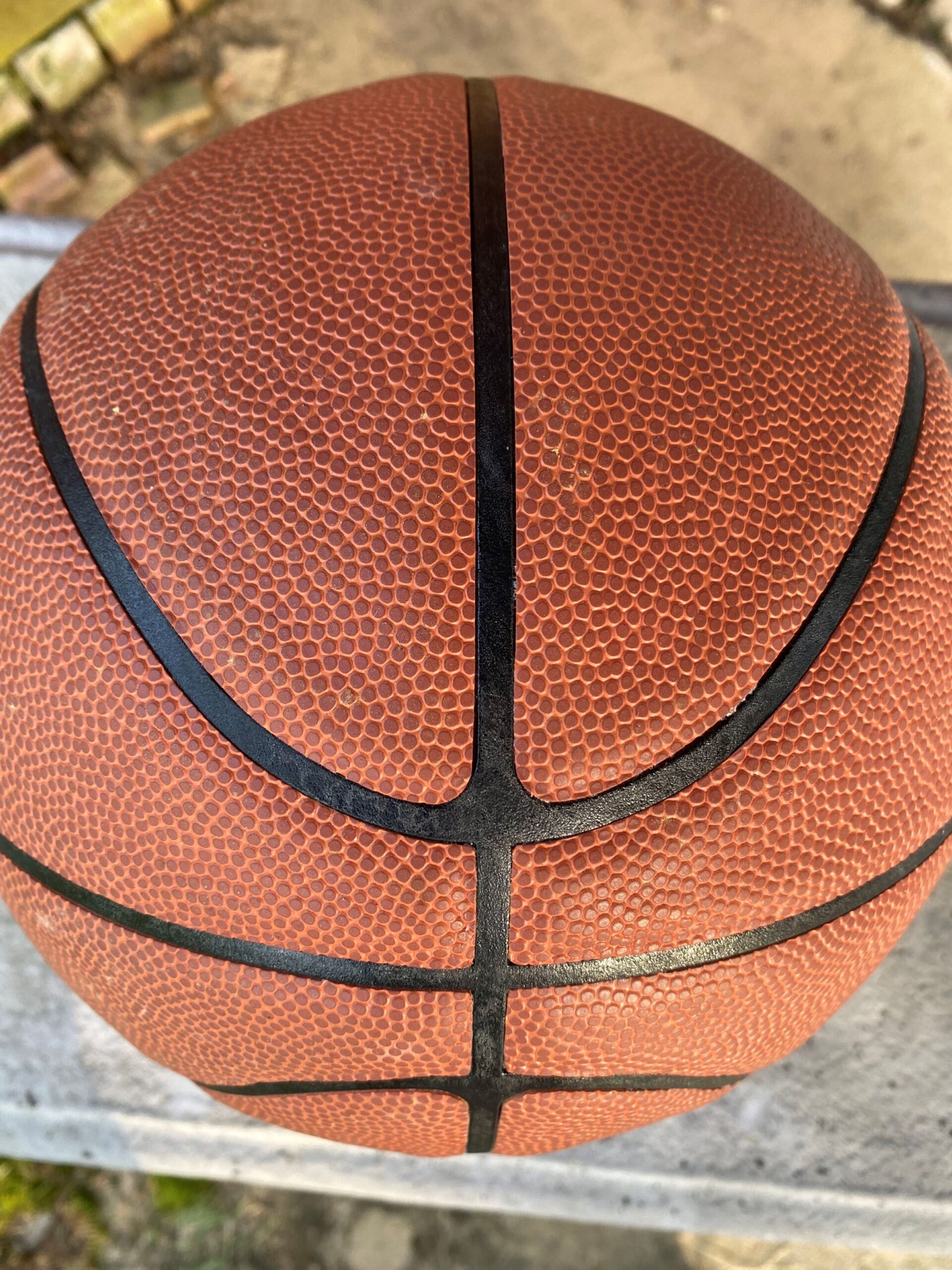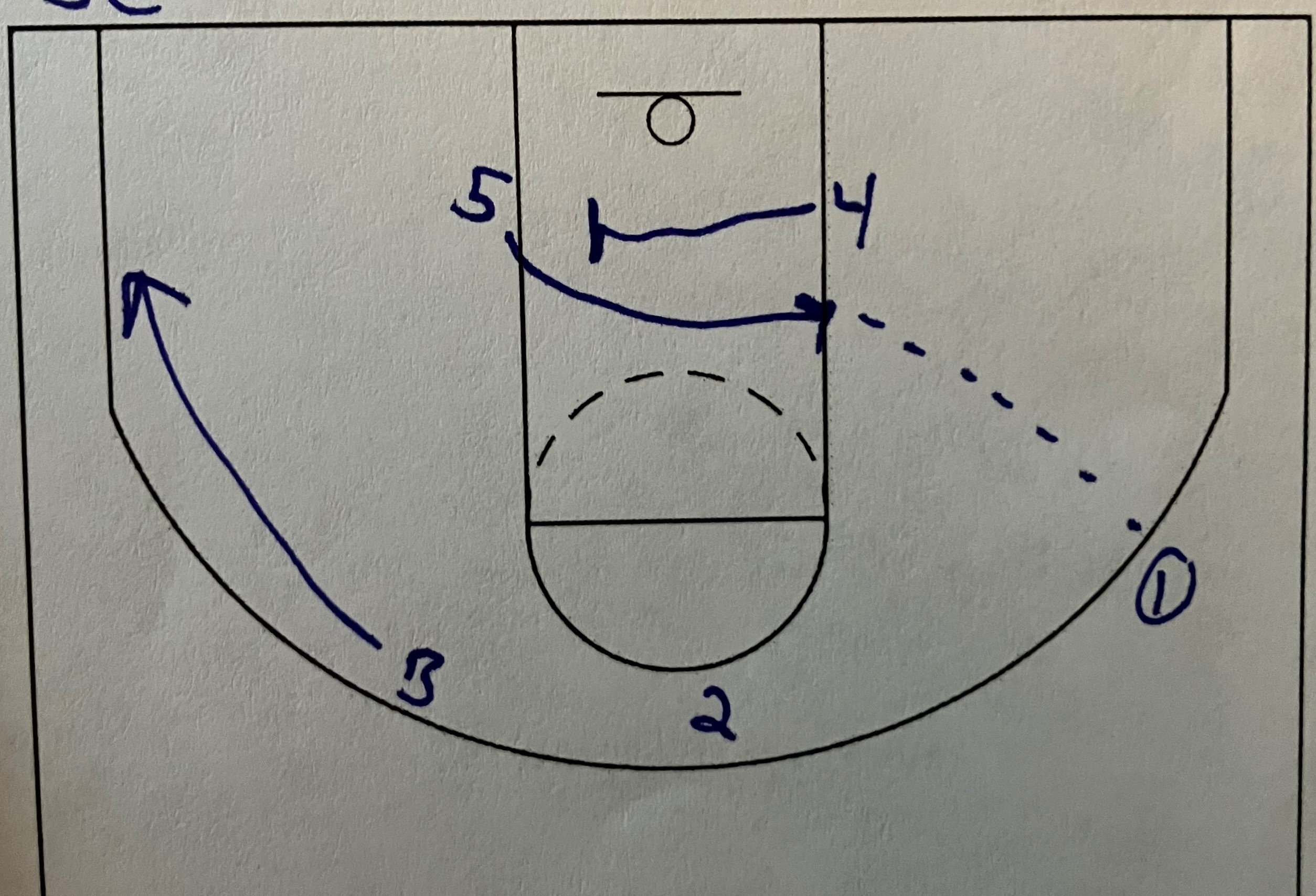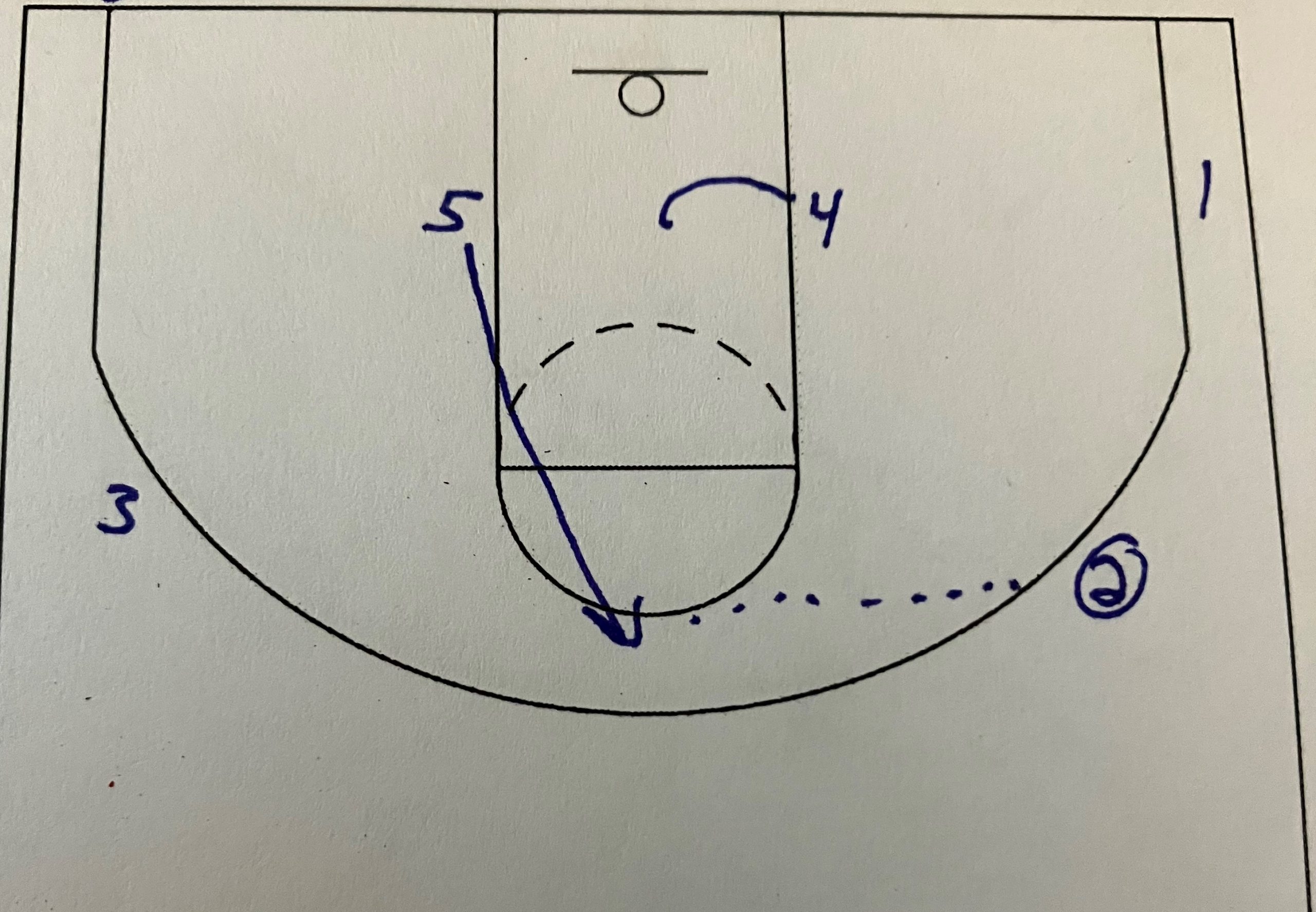A good way to make a SLOB play work is too change the point of attack. By getting the ball to the backside of the court and then attacking the basket, the defense has to completely change how they are guarding the play. The changing of attacking points can also help to remove backside help because the defenders are not able to rotate quickly enough.
This SLOB play also has action away from the ball screen to keep backside defenders from rotating. This puts pressure on the front side defenders because they have no help. Any breakdown by the on the ball defender on the ball screen will get a good shot. This SLOB has simple actions for the offense but creates many problems for the defense.
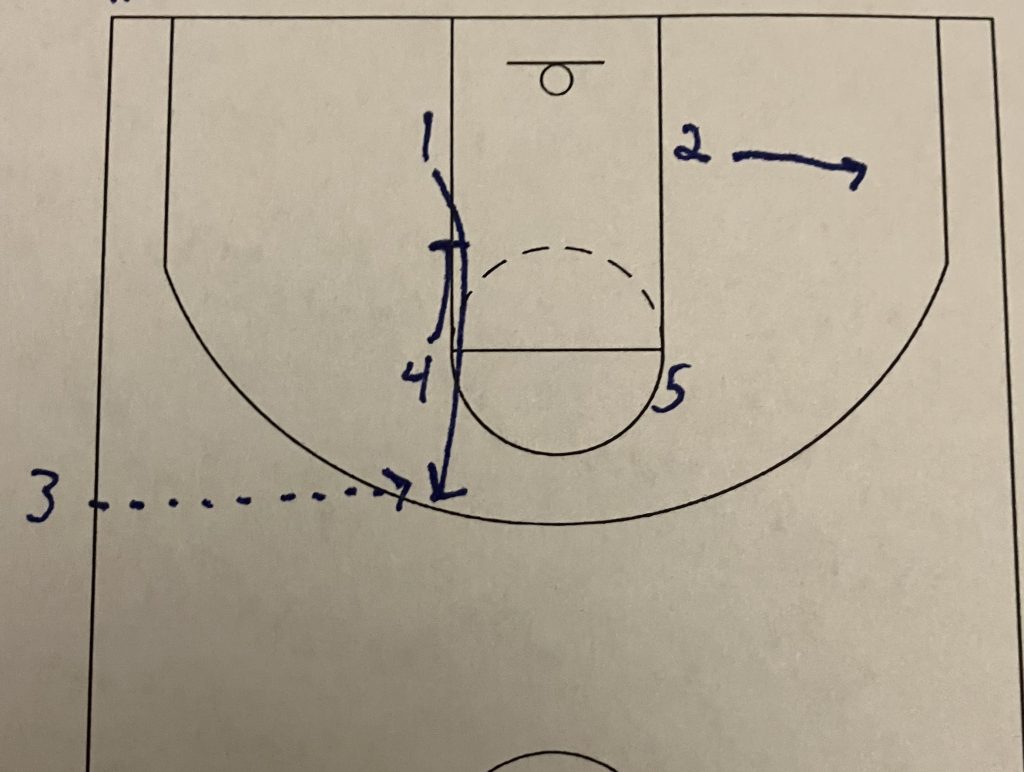
The SLOB starts in a box formation with the guards on the blocks and the bigs on the elbows. The point(1) runs up the lane line using the big(4) as a screener to get open for the in-bounds pass. This simple up cut and screen should be enough to get the entry pass. As the point(1) runs up the lane, the guard(2) is running out to the wing away from the ball.
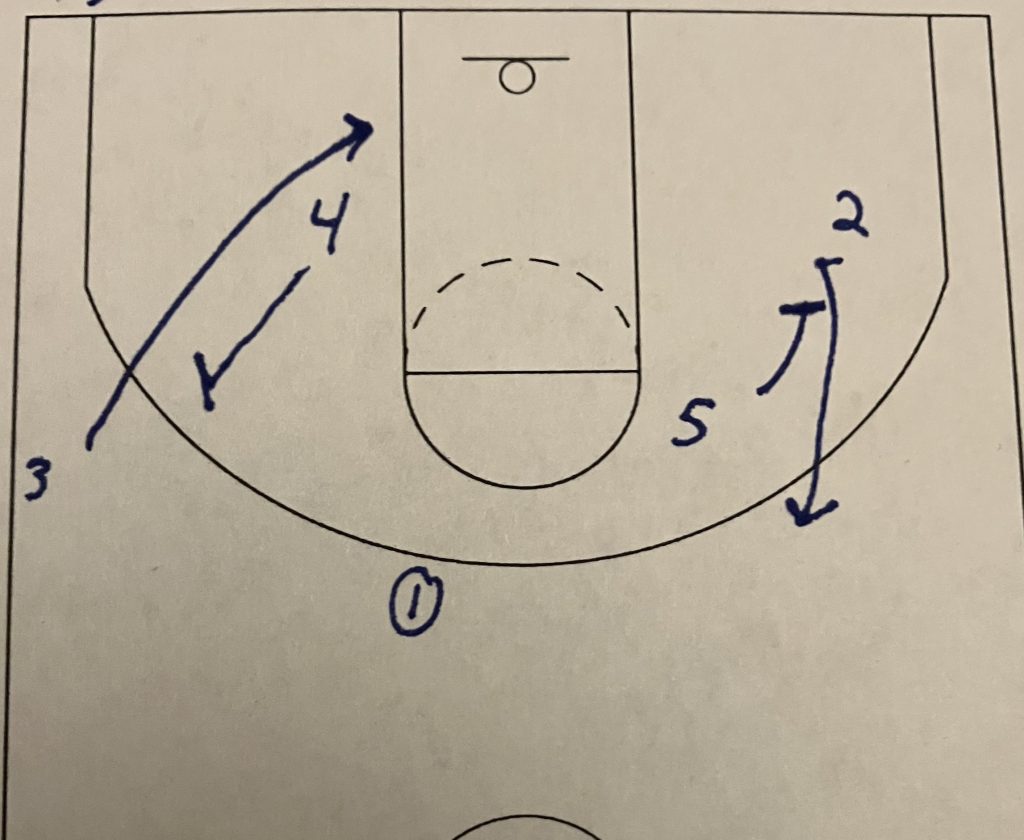
The 1st scoring option is a simple back screen for the forward(3) coming back into the court. The big(4) steps out and sets a back screen for the forward(3) cutting straight to the basket after the inbounds pass.
If the back screen doesn’t work then the center(5) is stepping out and setting a down screen for the guard(2) to come up the sideline. While this screen may not be necessary, I like the downscreen setting up the next action for the center(5) and guard(2).
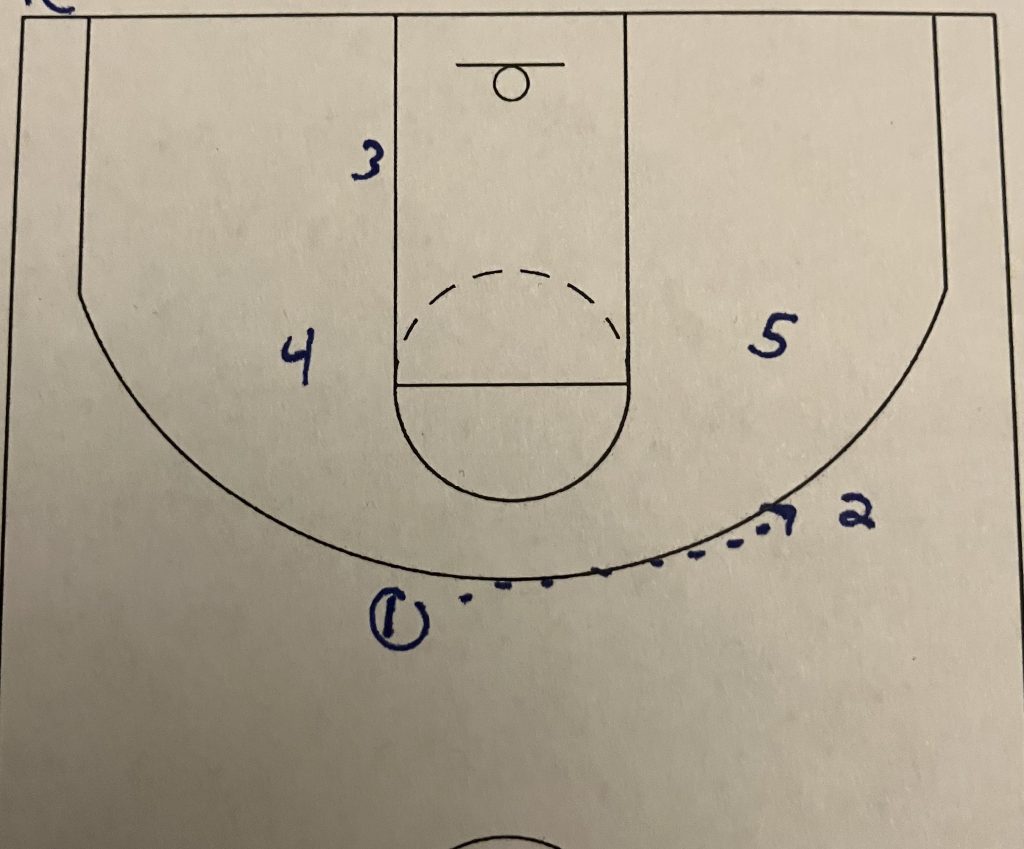
The point(1) now passes across to the guard(2) off of the downscreen. As the guard(2) catches everybody is set for the last action. The 3 above diagrams are all to get players in the right spots and the ball on the backside of the court. Now the offense is ready to score through attacking the defense.

The final part of the SLOB is two actions happening simultaneously. One action is ballside with a ball screen. And the 2nd action is backside with the two cuts coming of off the big(4). Each action is designed to help the other. The frontside ball screen makes the defense have to rotate and help while the curl cut follow on the backside helps to prevent the help side defense from rotating. This puts tremendous pressure on the defense.
The down screen by the center(5) on the guard(2) earlier helps the ball screen here. The guard’s(2) defender is having to fight through the down screen and is immediately changing direction to fight through a ball screen. The flip screen by the center(5) makes it tough on the defender to stay in front of the ball. This flip screen should free up the guard(2) as they attack the baseline. If the backside action occupies the helpside defense, then the guard(2) has a wide open layup.
If nothing else, the guard(2) and center(5) have the entire side of the floor to run a 2-man game against the defense. This is creating a scenario of spacing the floor in a way to allow the players to play the game of basketball. A playmaking guard(2) here will love this play. They will have the open space to create scoring chances for the offense.
As the ball screen is happening on the front side, the back side 3 players are working on there own action. The point(1) is setting 2 screens. The big(4) is running a curl cut. The forward(3) is following the big(4) off of the screen but running a straight cut back to the top of the key. This curl cut follow action is very hard to defend.
The curl cut follow action forces the defense to choose who to defend. If the defense drops to the curl cut, then the forward(3) will be open at the 3-point line. If the defense stays out knowing the forward(3) is coming, then the big(4) will be open on the curl cut.
And if the forward’s(3) defender does not chase around the screen, then they should get stuck in the traffic from the curl cut leaving the forward(3) open unless the defense switches. But a switching defense is going to struggle because there is 2 screens happening back to back. The 3 defenders must communicate very well or somebody will be left open.
A switching defense will have the point(1) and big(4) defenders switching off of the curl cut. And then the forward(3) and now original big(4) defender will have to switch the up the cut. A simple slip or cut by the point(1) will leave the switching defense completely confused.
The beauty of this SLOB is the backside curl cut follow action is to occupy the defense. This action keeps the defense from being able to rotate towards the ball screen. This lack of rotation allows the guard(2) to attack and create without additional defenders coming towards the ball. And if the defense does rotate then the curl cut or the up cut will be wide open.
